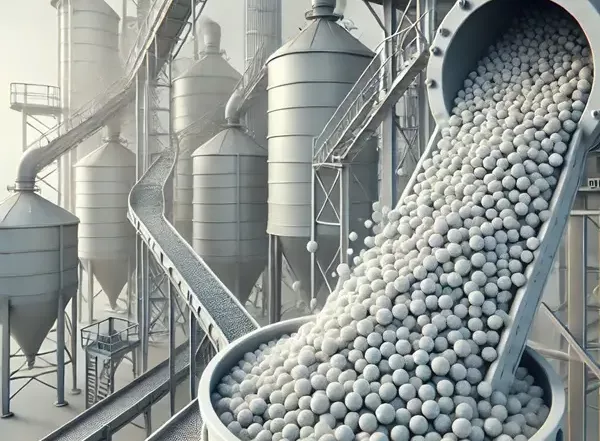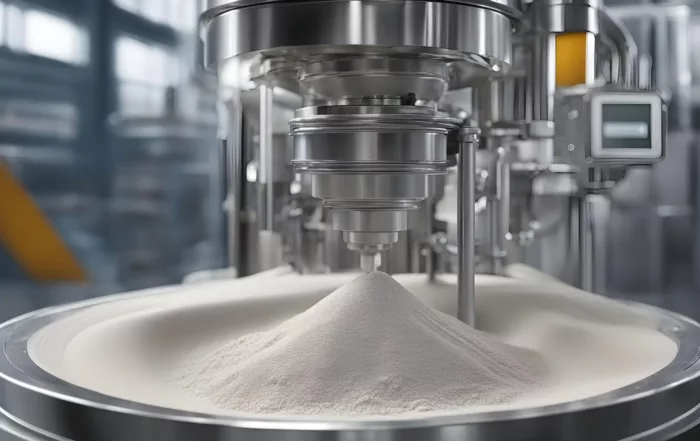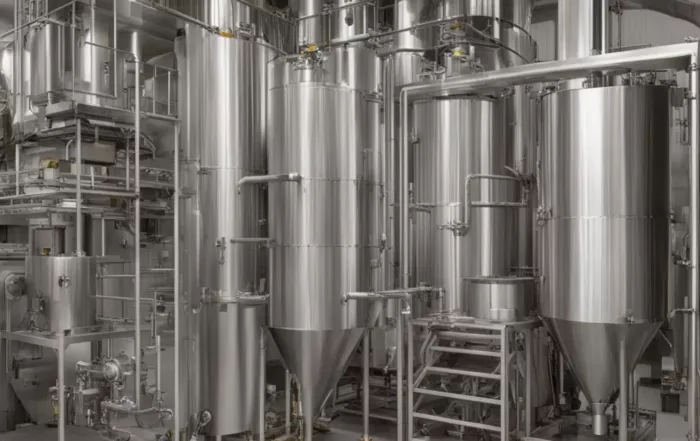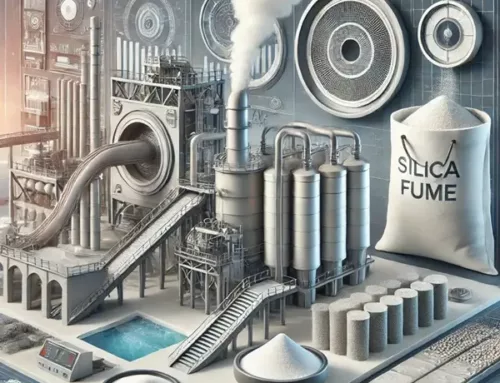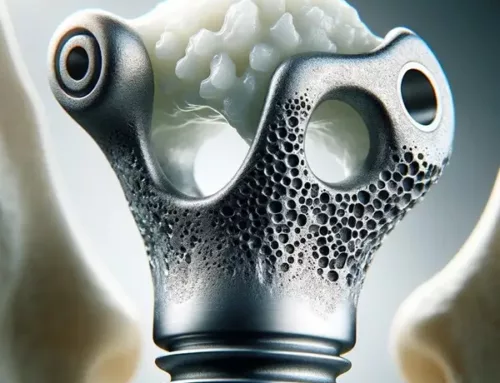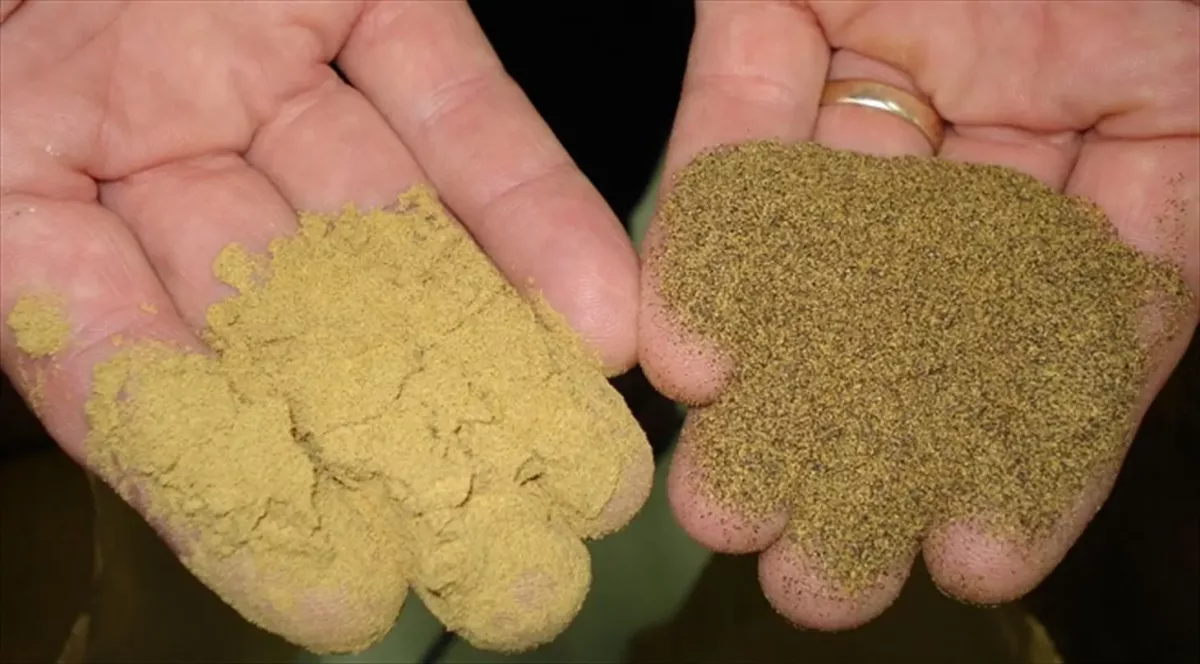
In June, we explored various techniques used to create particles. Now, we will focus on micronization, a common size-reduction technique.
Particle engineering aims to create optimal particle sizes, distributions, and specific surface characteristics. It also ensures particle homogeneity. Micronization is one of the most widely used methods for particle size reduction. In this article, we will delve into different micronization types and the laws of comminution (size reduction).
How Micronization Works
A mill typically consists of a cylindrical drum containing spheres. This drum grinds, crushes, or cuts solid materials. As the drum rotates, the spheres inside collide with the material, reducing its size to the desired diameter.
Grinding and Shaping
During grinding, solids are trapped between grinding units. These units rub against each other, reducing the particle size through friction.
Laws of comminution (size reduction)
It is difficult to determine the exact amount of energy needed for size reduction. Particle size, shape, flexibility, and hardness all vary. Additionally, some energy is wasted as heat, which makes it hard to calculate the energy requirement accurately.
However, formulas allow us to estimate the required energy for size reduction. These formulas do not account for mechanical losses in the grinder. Three important laws of comminution, developed in the 19th and mid-20th centuries, remain widely used.
Laws of comminution (size reduction)
In Conclusion
To calculate the energy requirements/ consumption needed to grind coarse-sized solids materials such as gravel, Kicks law can apply and does suffice. If we deal with cement or raw meal for example we can use Bond’s law because it is applicable at intermediate size and if we are dealing with pigments or very fine particle we can use Rittingers law, so these are the ranges of applicability of three laws of comminution/size reduction.
Kicks’ Law
Kicks’ Law applies to crushing solids. It states that the energy required to crush a material to a specific size fraction is the same, regardless of the original size.
Rittinger’s Law
Rittinger’s Law suggests that energy is proportional to the change in surface area, not to the change in particle size. It is most accurate when dealing with fine powders, where the surface area increases significantly during size reduction. For abrasive particles, where surface area change is minimal, Kicks’ Law is more accurate.
Both Kicks’ and Rittinger’s laws are determined experimentally. They are useful for specific applications but have limited general applicability.
Bond’s Law
In 1952, Bond proposed a more representative method to predict power consumption in crushing and grinding. Bond’s Law states that the energy required to form particles from a large size is proportional to the square root of the surface-to-volume ratio of the product. This law accounts for both surface and volume ratios, making it applicable to a range of materials.
Conclusion: Choosing the Right Law for Size Reduction
To calculate energy requirements for grinding coarse materials like gravel, Kicks’ Law is appropriate. For materials like cement or raw meal, Bond’s Law is more suitable. Finally, when dealing with fine particles like pigments, Rittinger’s Law provides the most accurate estimate. These three laws apply to different particle size ranges in comminution.
How Shape Influences Flow: Spherical vs. Irregular Particles
Particle shape plays a critical role in the behavior of bulk solids, particularly in how they flow under various conditions. While particle size often dominates discussions about flowability, shape is an equally important factor [...]
Particle engineering in Pharmaceuticals, Food, and Cosmetics
Particle engineering is an emerging field impacting multiple industries, particularly pharmaceuticals, food, and cosmetics. Its roots trace back to ancient artisans, who skillfully manipulated particles at the macro scale to create pottery and [...]
Designing Functional Powders
Functional powder design plays a fundamental role in numerous industries. It enhances the effectiveness and efficiency of products we encounter daily. Customizing powders for specific applications enables optimization of their performance. As [...]
Particle engineering Industry’s golden goose (part 2)
Particle Engineering Techniques - an introduction Particle Engineering Techniques play a crucial role in industries such as food, feed, and pharmaceuticals. It provides the ability to control particle size, distribution, and surface [...]


